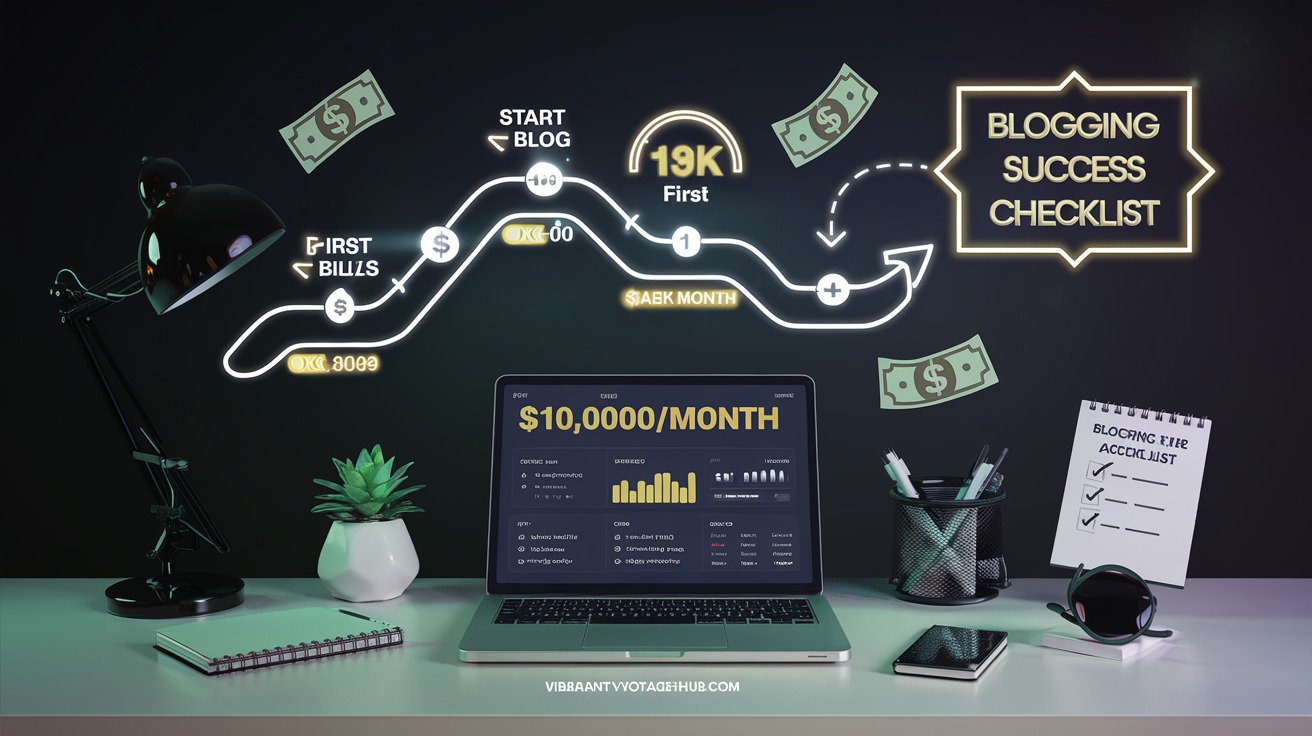Reaching the $10,000 Monthly Milestone: My Blogging Journey
As a blogger, there’s nothing quite like the feeling of seeing your hard work pay off. For me, that moment came when my blog started generating a significant income – enough to change my life.
It took time and perseverance, but I was determined to make money blogging. I experimented with various strategies, learned from my mistakes, and adapted to the ever-changing landscape of affiliate marketing and online content creation.
My journey wasn’t easy, but it was worth it. In this article, I’ll share my step-by-step guide on how to create a profitable blog and increase your online income.
Key Takeaways
- Discover the exact strategies that helped me reach $10,000 monthly
- Learn how to create a profitable blog from scratch
- Understand the importance of realistic expectations in blogging
- Find out which revenue streams contributed most to my success
- Avoid common mistakes that can hinder your blogging progress
My Blogging Journey: From Zero to $10,000 Monthly
I started blogging at a crossroads, dissatisfied with my nursing career and seeking financial freedom. I was in nursing school, feeling trapped in a career path I didn’t enjoy, and looking for a way to have more control over my time and income. The desire to work from home and have a better work-life balance drove me to explore blogging as a potential career.
Why I Started Blogging
I was exhausted from balancing nursing school and work, and I realized that continuing down this path wouldn’t lead to the life I wanted. I wanted to be in control of my time to spend with our future kids and enjoy a normal work-life balance. This realization led me to consider alternative careers that could offer the flexibility and financial stability I needed. Learning more about blogging helped me understand its potential for generating a significant income.
My First Few Months of Struggle
The initial months of my blogging journey were challenging. Despite consistent content publication, I saw minimal traffic and money coming in, making me question the viability of blogging as a profitable venture. It was a struggle to understand what I was doing wrong and how I could improve.
When Things Finally Clicked
My breakthrough came around the 7th month when I finally grasped how to create valuable content for my readers and implemented effective monetization strategies. This turning point marked the beginning of my journey towards making money from my blog. To illustrate my progress, here’s a simple breakdown of my journey:
| Month | Income | Traffic |
|---|---|---|
| 1-3 | $0 | Minimal |
| 4-6 | $100 | Low |
| 7-15 | $10,000 | Significant |
Reaching $10,000 monthly took 15 months of persistent effort, learning from failures, and adapting my strategies. This journey taught me the importance of patience, persistence, and continuous learning in achieving success in blogging.
Setting Realistic Goals for Your Blogging Business
The key to my blogging success lay in the goals I set from the very beginning. When I started, I didn’t aim too high; instead, I focused on setting achievable targets that would propel me forward. This approach not only helped me stay motivated but also allowed me to track my progress effectively.
My First Month Blogging Goals
In my first month of blogging, my goals were modest yet significant. I aimed to earn $250, which I thought would be a great start. I also planned to write 5 blog posts and monetize at least 3 of them. Additionally, I intended to share these posts on Pinterest to increase my readership and join 3 Facebook Groups to expand my audience. To my surprise, I achieved each one of these goals, which gave me the momentum I needed to continue.
How I Scaled My Goals as I Grew
As my blog grew, so did my goals. I systematically increased my targets, ensuring they remained challenging yet attainable based on my current traffic and monetization methods. For instance, my current monthly goals include earning $10,000, writing at least one monetized blog post weekly, scheduling 25+ pins weekly, and maintaining regular communication with my audience. This scaling helped me stay focused and driven.
| Goal Type | First Month Goals | Current Monthly Goals |
|---|---|---|
| Earning | $250 | $10,000 |
| Blog Posts | 5 | At least 4 (monetized) |
| Pinterest Pins | 5 | 25+ |

By setting realistic goals and gradually scaling them, I was able to build a successful blogging business. This approach can be applied to any blogging journey, helping to create a clear roadmap to success.
Choosing a Profitable Blog Niche
Identifying a profitable niche is the first step towards creating a sustainable blogging business. Your niche determines the potential for generating revenue and attracting a loyal audience. To make a successful blog, you need to choose a niche that has the potential to make money and is not overly competitive.
To come up with blog post ideas, ask yourself a few critical questions: What am I really good at? What do I really like doing? What do I know a lot about? What do other people tell me I’m good at or know a lot about? What am I curious about, but don’t necessarily know much about? By answering these questions, you can start listing potential niches that align with your strengths and interests.
How I Identified My Monetizable Topic
I identified my monetizable topic by evaluating potential niches based on their profit potential, audience interest, and competition level. I researched whether they had products I could review, courses I could promote, opportunities to create my own products, and whether they contained high-value affiliate marketing opportunities.
- Listing topics I was knowledgeable about
- Researching their profit potential
- Analyzing competition levels
- Choosing one that scored well across all these factors
By following this process, I was able to select a niche that had a balance of passion and profit potential. This balance is crucial for maintaining motivation during slow periods and ensuring the long-term sustainability of the blog.
Evaluating Competition in Your Niche
Evaluating the competition in your chosen niche is crucial. You want a niche with enough audience interest to generate traffic, but not so competitive that it’s impossible to rank in search results as a newcomer. I analyzed the top-ranking blogs in my niche and assessed their content, identifying gaps that my blog could fill.

Passion vs. Profit: Finding the Balance
I recommend balancing passion with profit potential—a niche you’re passionate about will keep you motivated during slow periods, but it must have clear monetization paths to be sustainable. My niche allowed me to create content that resonated with my audience while also providing opportunities to earn money through various channels.
By carefully choosing a profitable niche and understanding the dynamics of competition and audience interest, you can set your blog up for long-term success and create a loyal readership.
Setting Up Your Blog the Right Way
Creating a successful blog starts with a solid foundation. A well-set-up blog is crucial for attracting and retaining readers, and ultimately, generating money. In this section, I’ll guide you through the essential steps to set up your blog for success.
Selecting a Domain Name and Hosting
Choosing the right domain name and hosting is the first step in setting up your blog. Your domain name should be memorable, relevant to your niche, and easy to spell. Avoid using hyphens and numbers that could confuse potential visitors. For hosting, I recommend investing in a quality service from the start, as site speed and reliability directly impact both user experience and search engine rankings. The cost of a domain name is around $10-$15 per year, and hosting costs around $5-$10 per month.
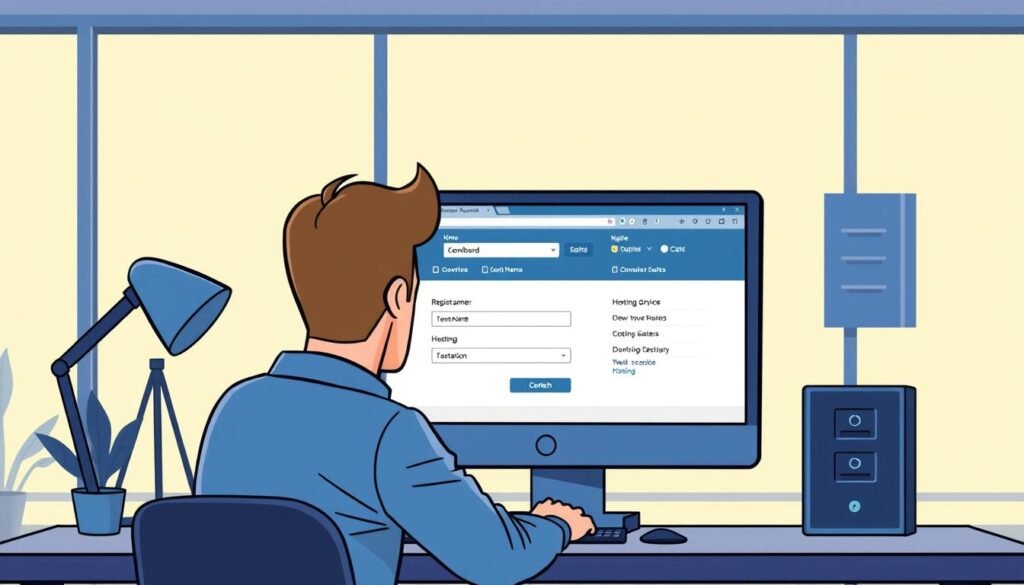
Installing and Configuring WordPress
I highly recommend using WordPress as your blogging platform due to its flexibility, SEO advantages, and widespread support. Currently, WordPress powers 43% of all websites on the internet, making it the most popular blogging platform. Installing WordPress is relatively straightforward, and most hosting services offer 1-click installations. Once installed, you can configure your site’s settings, such as setting your site title, tagline, and timezone.
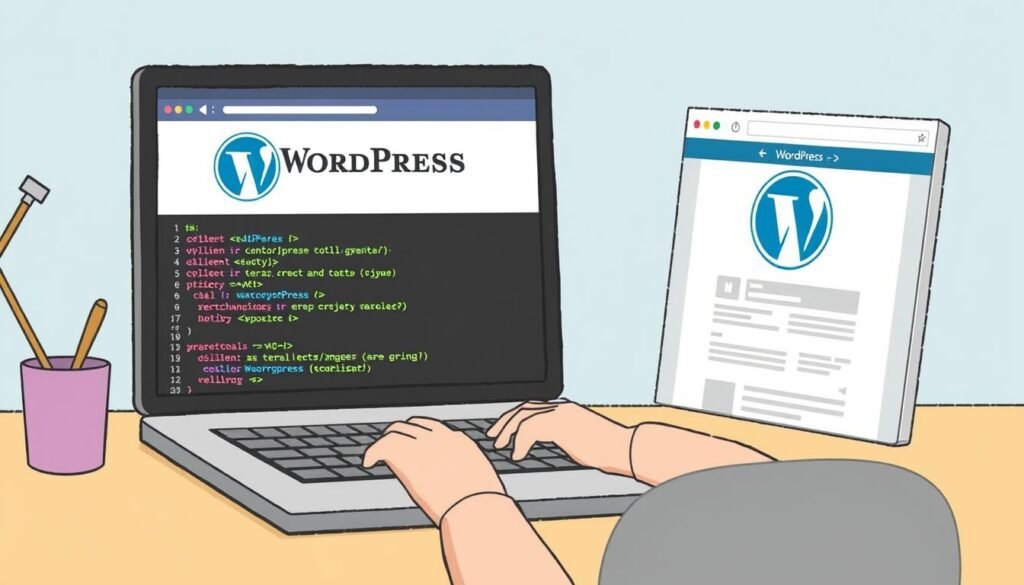
Essential Plugins and Tools I Use
To enhance your blog‘s functionality and performance, you’ll need to install some essential tools and plugins. I recommend installing Yoast SEO for optimization, Akismet for spam protection, a caching plugin for speed, and social sharing tools to help your content spread. These tools will help you manage your blog more efficiently and improve your overall blogging experience.
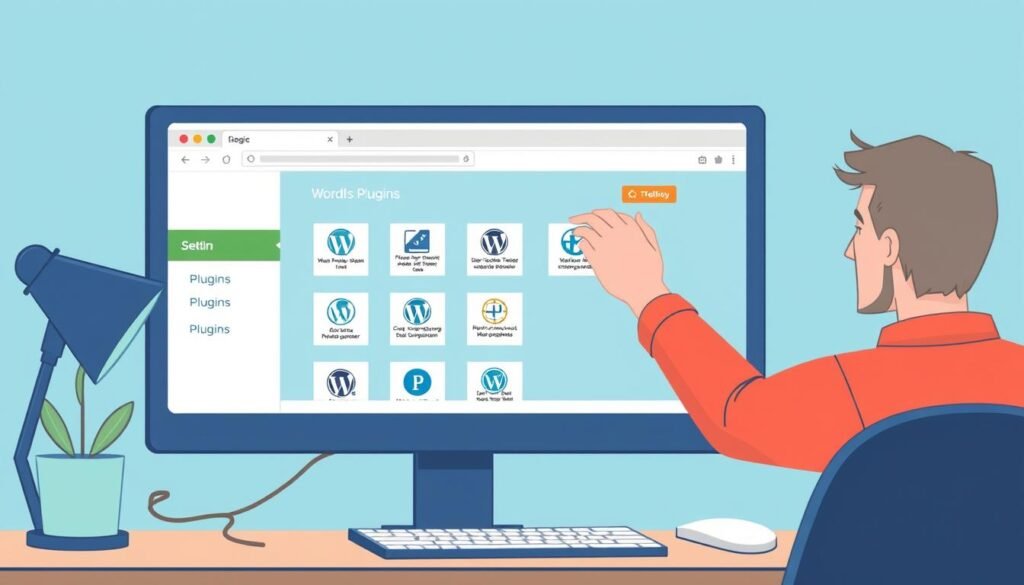
By following these steps, you’ll be well on your way to setting up a professional-looking blog that attracts and retains readers. Remember, setting up your blog properly from the beginning saves you countless hours of frustration later.
Creating a Content Strategy That Converts
My journey to $10,000 per month began with creating a content strategy that truly converted. At first, my approach to blogging was random, writing about topics I liked without a clear direction. However, I soon realized that to make money blogging, I needed a more strategic approach.
I evolved my content strategy from random posts to creating content that addressed specific problems my audience was actively searching for online. This shift was crucial in building a loyal readership and increasing my blog’s visibility.
My Approach to Keyword Research
To start, I focused on keyword research to identify low-competition keywords that my audience was searching for. I recommend looking for keywords with fewer than 5 backlinks pointing to the top pages when you’re just starting out. I like to aim for keywords with a KD of less than 20, preferably less than 5 for my first few articles.
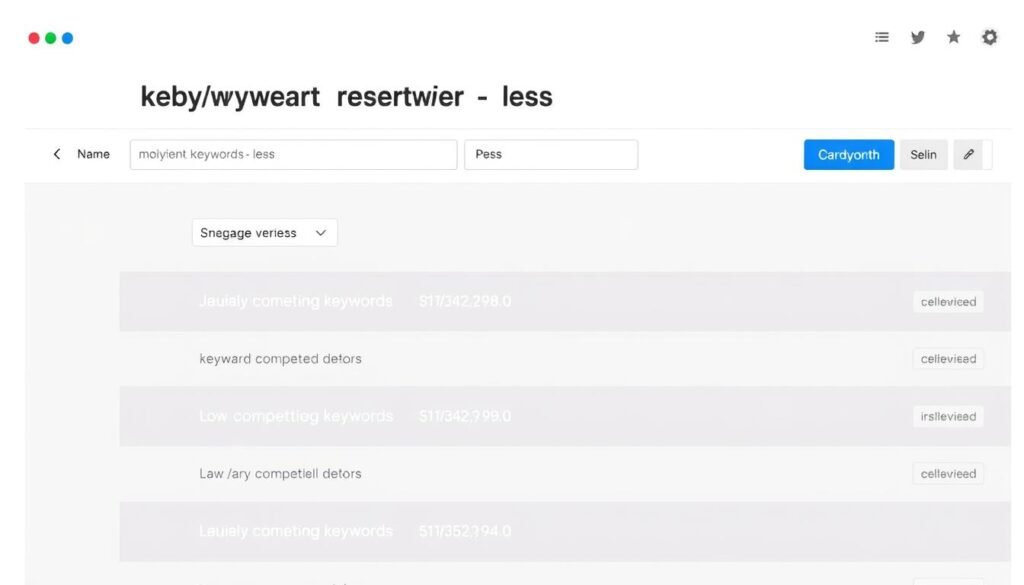
My approach involved finding questions people were asking in my niche and creating comprehensive, helpful content that answered those questions better than existing resources. This not only helped me rank more quickly but also built trust with my audience.
Planning My Editorial Calendar
With my keyword research in hand, I developed an editorial calendar that balanced commercial content (posts that could be monetized) with valuable free content that built trust and authority with my audience. I made sure to plan my posts in advance, considering the time it would take to create and publish them.
The most successful content strategy I discovered was creating detailed, solution-oriented posts that naturally incorporated affiliate products as genuine recommendations rather than forced promotions. This approach not only helped me make money but also provided value to my readers.
How I Made $10,000/Month Blogging: The Breakdown
Achieving a $10,000 monthly income from my blog was a significant achievement that came after 15 months of consistent effort and strategic decision-making. In this section, I’ll break down the various components that contributed to this milestone.
My Income Sources at a Glance
My monthly income of $10,000 is derived from multiple revenue streams. The breakdown is as follows:
| Income Source | Percentage | Amount |
|---|---|---|
| Affiliate Marketing | 62% | $6,211 |
| Digital Products | 30% | $3,010 |
| Display Advertising | 3% | $315 |
| Sponsored Posts | 3.5% | $352 |
| Freelancing | 1.5% | $176 |
This diversified income stream helped me achieve the $10,000 monthly milestone. Affiliate marketing was the largest contributor, followed by sales of my digital products.
Timeline: How It Took Me 15 Months to Reach $10K
Reaching $10,000 per month wasn’t an overnight success. It took exactly 15 months from the launch of my blog. The first 7 months were challenging, with total earnings of less than $1,000. However, after the 10th month, my income started to grow significantly.
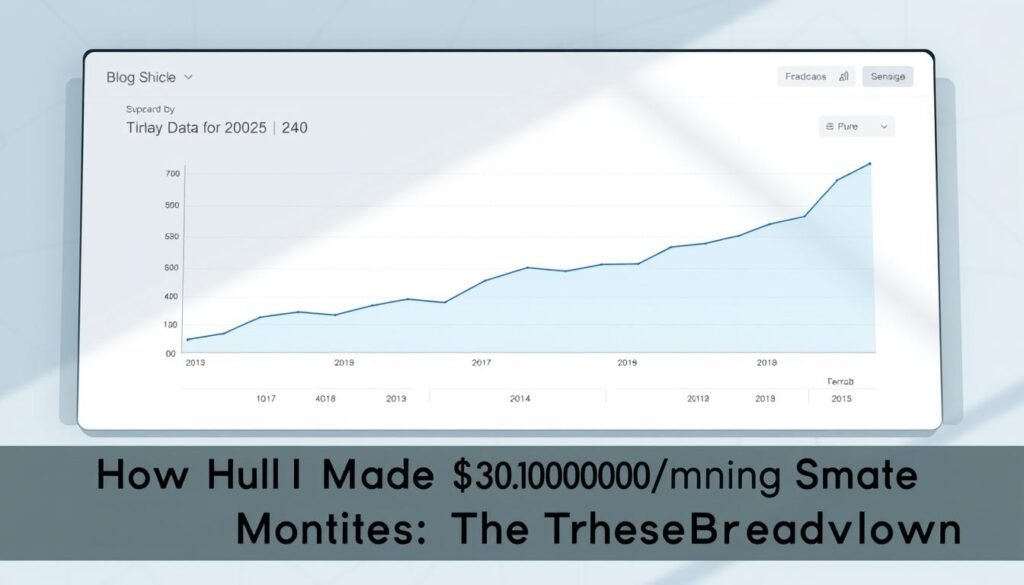
My Real Expenses vs. Profit
While my monthly income was $10,000, not all of it was profit. I had to deduct expenses such as hosting ($10/month), email marketing software ($29/month), premium WordPress plugins ($150/year), outsourced content ($200/month), and various courses and tools ($1,500 total). After accounting for these expenses, my profit margin was approximately 70-75%.
Understanding the breakdown of income and expenses is crucial for anyone looking to start a successful blog. It not only helps in planning but also in setting realistic expectations.
Mastering Affiliate Marketing: My $6,211 Revenue Stream
Through strategic affiliate marketing, I’ve managed to create a lucrative revenue stream that now stands at $6,211 per month. Affiliate marketing involves promoting products or services from other companies and earning a commission on sales made through your unique referral link. This strategy has become a cornerstone of my blogging business, allowing me to monetize my content effectively.
My Top-Performing Affiliate Programs
My top-performing affiliate programs have been instrumental in my success. The top three programs are Ultimate Bundles, House Of Brazen, and Bluehost, generating $3,131, $1,078, and $661, respectively. I’ve also found success with affiliate networks like ShareASale and AWIN.
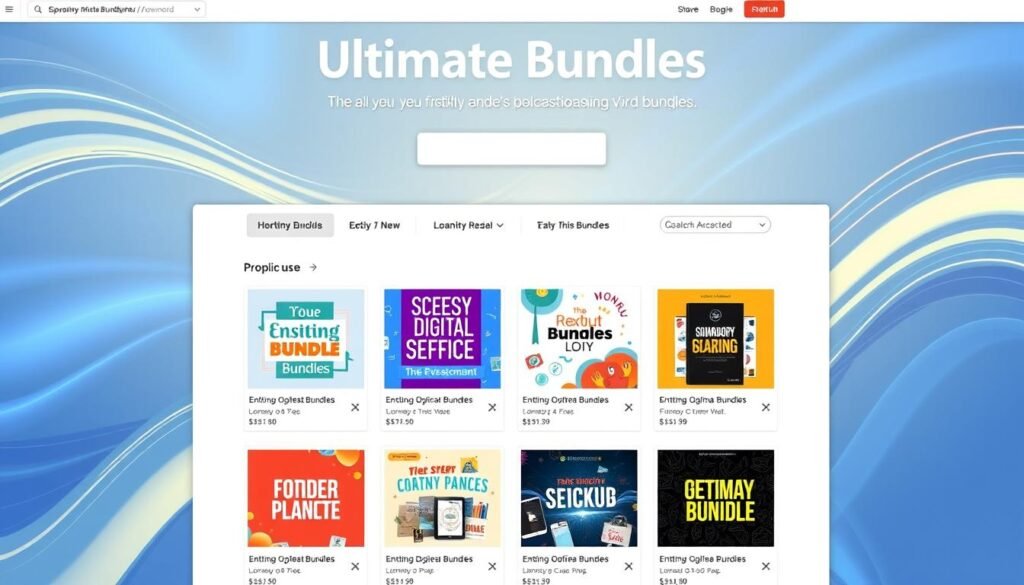
How I Promote Affiliate Products Authentically
Authenticity is key when promoting affiliate products. I only recommend products I’ve personally used and believe in, creating comprehensive review posts that highlight both pros and cons. This approach has helped build trust with my audience, increasing the effectiveness of my affiliate marketing efforts.
Building Relationships with Affiliate Managers
Building relationships with affiliate managers has proven to be highly beneficial. These connections have led to custom commission rates, exclusive discount codes for my audience, and valuable insights into upcoming promotions. By fostering these relationships, I’ve been able to optimize my affiliate marketing strategy further.
Affiliate marketing has become my largest revenue stream, and its success can be attributed to strategic product promotion, authentic content creation, and strong relationships with affiliate managers. By continuing to refine these strategies, I’m confident in my ability to maintain and grow this income stream.
Creating and Selling Digital Products: My $3,010 Success Story
I’ve discovered that creating and selling digital products is a highly effective way to monetize my blog. Not only do I get to share my knowledge with others, but digital products also offer a high-margin revenue stream with virtually no ongoing costs beyond initial creation.
Types of Digital Products That Worked for Me
The digital products that performed best for me were comprehensive guides solving specific problems. For instance, my Affiliate Marketing Bundle and Boosting Your Blog Traffic ebook became bestsellers because they addressed the exact challenges my audience was facing. I currently have three products up for sale and plan to launch a few more in-depth courses this year.
My Product Creation Process
My product creation process involves several key steps. First, I survey my audience to identify their biggest pain points. Then, I create an outline based on their needs and develop the content over 2-3 weeks. Finally, I have it professionally designed for a polished appearance. This process ensures that my products are relevant and valuable to my audience.
How I Launched and Promoted My Products
Launching products with urgency and scarcity significantly increased conversion rates during the initial release period. I achieved this by offering limited-time discounts and bonus items for early purchasers. Additionally, creating my own affiliate program with a 40% commission attracted 150 affiliates who helped promote my products to their audiences, dramatically extending my reach beyond my own blog.
By leveraging digital products and a strong affiliate program, I’ve been able to generate $3,010 in monthly income. This experience has shown me the potential of digital products in blogging and the importance of effective marketing strategies.
Monetizing with Display Advertising: My $315 Ad Revenue
As I continued to grow my blog, I explored various monetization strategies, including display advertising, which eventually contributed $315 to my monthly income.
Display advertising has become a vital part of my blogging income, providing a relatively passive revenue stream that requires minimal ongoing effort once set up properly.
My Experience with Google AdSense
I started with Google AdSense when my blog was new, finding it the easiest ad network to get approved for. Initially, the revenue was modest, but as my traffic increased, so did my AdSense earnings.
My ad income has increased since my last income report, but so did my traffic. I’m still with Google AdSense and have recently joined Media Net to diversify my ad revenue streams.
How I Optimize Ad Placement for Maximum Revenue
I strategically placed ads within my content, in the sidebar, and below posts, balancing user experience with revenue potential. I avoided intrusive ad formats like pop-ups to prevent annoying my readers.
By optimizing ad placement and increasing my traffic, I was able to nearly triple my ad income when my pageviews doubled from 25,000 to 50,000 monthly.
Display advertising generated $315 of my monthly income—the smallest of my revenue streams but also the most passive. While it’s not my primary income source, I value it as part of my diversification strategy, providing consistent baseline income even during months when affiliate commissions or product sales fluctuate.
Securing Sponsored Posts: How I Made $352 from Brands
One of the unexpected benefits of building my blog was the opportunity to partner with brands through sponsored content. As my blog grew in popularity, I started receiving inquiries from brands interested in collaborating with me. Initially, these opportunities came to me organically, but I later developed a proactive strategy to secure more brand partnerships.
How I Find and Pitch to Brands
To find brands to collaborate with, I focused on companies that offered products or services relevant to my audience. I researched their existing influencer partnerships and identified potential brands that aligned with my content. When pitching to brands, I created a media kit highlighting my blog statistics, audience demographics, and previous collaborations. This kit significantly improved my response rate when reaching out to potential sponsors.
For instance, I successfully partnered with a WordPress Theme Shop by showcasing how our audiences overlapped and demonstrating the value I could bring to their brand through sponsored content.
Setting My Rates and Negotiating Deals
When setting my rates for sponsored posts, I considered factors such as my monthly pageviews, engagement metrics, and the scope of work involved. For a simple mention, I might charge $150, while a comprehensive review with original photography could be $500. I was transparent about my pricing and negotiated deals based on the brand’s requirements and budget.
By maintaining strict standards for sponsored content, ensuring authenticity, and clearly disclosing sponsored posts, I built trust with my readers and attracted more brand partnerships.
Building an Email List: My Most Valuable Blogging Asset
One of the most valuable assets I’ve developed as a blogger is my email list. It’s been instrumental in my success, directly contributing to a significant portion of my digital product sales and affiliate commissions.
Effective Email Marketing System
I started by setting up a simple yet effective email marketing system using ConvertKit. This allowed me to create targeted opt-in forms for different blog posts, rather than using a generic form across my site.
By focusing on specific resources that solved immediate problems for my audience, such as checklists and mini-courses, I was able to increase my list growth.
Lead Magnets and Email Sequences
My most effective lead magnets were highly specific resources that addressed the immediate needs of my audience. I also developed automated email sequences that provided value, built trust, and introduced my affiliate recommendations and products at appropriate points in the relationship.
These strategies not only grew my list but also significantly boosted my sales and affiliate commissions, making my email list a truly valuable asset.
My Traffic Generation Strategy
As I reflect on my journey to making $10,000 a month from blogging, I realize that a robust traffic generation strategy was crucial. My approach evolved significantly over time, from relying heavily on Pinterest in the early days to a more diversified strategy that included SEO, social media, and email marketing as my blog matured.
SEO Techniques That Boosted My Rankings
One of the most impactful SEO strategies I implemented was targeting low-competition, high-intent keywords. I focused on keywords with a KD score of less than 20, often opting for those under 5 for my initial articles. Creating comprehensive content that surpassed my competitors also played a significant role. For instance, my guide on blog traffic generation became a cornerstone piece that attracted significant organic traffic.
Building quality backlinks through guest posting was another effective technique. By contributing valuable content to reputable sites in my niche, I not only gained backlinks but also expanded my audience.
How I Use Pinterest to Drive Blog Traffic
Pinterest became a secret weapon for driving traffic quickly while I waited for SEO to take effect. I created 5-7 pin designs for each post and scheduled them using Tailwind, a tool that helped me maintain consistency and reach a broader audience. Joining relevant group boards further amplified my visibility.
I discovered that content format significantly impacted traffic. List posts, how-to guides, and case studies consistently outperformed other formats in both search rankings and social sharing. By focusing on these formats and leveraging Pinterest, I was able to drive substantial traffic to my blog.
How I Scaled My Blog Business Beyond $10K
Scaling my blog business beyond $10,000 monthly demanded a fundamental change in how I operated. As I reflect on my journey, it’s clear that this shift was crucial for sustainable growth and increased profitability.

My blog had become a profitable business, generating significant income each month. However, I realized that to continue making more money, I needed to adjust my approach to blogging and focus on creating systems that would allow me to make money without directly trading my time for it.
My Approach to Outsourcing and Team Building
I began by hiring a virtual assistant for 10 hours weekly to handle administrative tasks, social media scheduling, and basic email management. This allowed me to focus on high-value activities like content creation and strategy. By outsourcing tasks that weren’t the best use of my time and expertise, I was able to scale my business more efficiently.
Diversifying My Income Streams
Diversifying my income streams became crucial for sustainable growth. I expanded from primarily affiliate marketing to a more balanced mix that included digital products, membership sites, and higher-end coaching services. This not only increased my income but also provided multiple ways for my audience to engage with my content and products, ultimately making my blog a more robust and resilient business.
By reinvesting approximately 30% of my profits back into the business, I was able to improve my tools, premium design elements, and outsource content creation for topics that required specialized knowledge. This strategic investment enabled me to work smarter, not harder, and continue growing my blog beyond $10,000 monthly.
Blogging Mistakes I Made Along the Way
As I reflect on my blogging journey, I’ve come to realize the numerous mistakes I made along the way. Reaching $10,000 a month wasn’t straightforward; it involved a series of trial and errors that ultimately shaped my understanding of what works and what doesn’t in the blogging world.
One of the most significant challenges I faced was identifying where I was wasting my time and resources. In the early days, I was heavily invested in perfecting my blog’s design and logo, which, while important, wasn’t the key to driving revenue. My focus should have been on creating valuable content and building traffic. This misstep cost me valuable time that could have been better spent on strategies that directly impacted my bottom line.
Time-Wasting Activities I Regret
Looking back, there were several activities that I regret investing too much time in. For instance, I spent countless hours on social media platforms that weren’t aligned with my niche. Despite significant time investment, Twitter and Facebook brought minimal traffic, whereas Pinterest and SEO efforts delivered 90% of my visitors.
- Spending too much time on perfecting blog design instead of creating content.
- Wasting hours on social media platforms that didn’t drive significant traffic.
- Not focusing on SEO and email list building early on.
Investments That Weren’t Worth It for Me
Not all investments yielded the expected returns. I made the mistake of investing in too many courses and tools simultaneously, which overwhelmed me with information and scattered my focus. It would have been more beneficial to master one strategy at a time.
- Investing in multiple courses and tools at once, leading to information overload.
- Underpricing my services and digital products, resulting in lost revenue.
- Not starting an email list from the beginning, missing out on potential subscribers.
These experiences have taught me valuable lessons about the importance of prioritization, focus, and understanding the true value of my offerings. By sharing these mistakes, I hope to help others navigate their blogging journey more efficiently.
Tools and Resources That Accelerated My Success
In my experience, the key to blogging success lies in identifying and utilizing the most effective tools and resources available. As I navigated my way to achieving $10,000 per month, I discovered that having the right toolkit was instrumental in streamlining my workflow, enhancing productivity, and ultimately driving revenue.
Essential Blogging Tools in My Daily Workflow
The blogging tools that had the biggest impact on my success included Ahrefs for keyword research, ConvertKit for email marketing, Tailwind for Pinterest scheduling, and Canva for creating professional graphics without design skills.

Additionally, WordPress plugins like Yoast SEO, WP Rocket for speed optimization, and Thrive Leads for building my email list were essential components of my daily workflow that significantly improved my site’s performance.
Courses and Books That Transformed My Approach
I invested in several courses that delivered exceptional ROI, particularly those focused on affiliate marketing strategy, email list building, and creating digital products—the knowledge gained accelerated my progress by months.

Books that transformed my approach included “Building a StoryBrand” for clarifying my messaging, “Expert Secrets” for product creation, and “They Ask, You Answer” for content strategy—each provided frameworks I still use today.
The most valuable resource wasn’t a tool or course but the relationships I built with other bloggers through Facebook groups and mastermind communities, which provided accountability, collaboration opportunities, and insider knowledge.
Conclusion: Your Roadmap to $10,000/Month Blogging
I’ve learned that making $10,000 per month blogging requires a combination of hard work, smart decisions, and a willingness to adapt. To achieve this income, it’s essential to understand that this amount doesn’t entirely translate to profit, as business expenses come into play.
The path to this milestone involves several key steps. First, putting in consistent effort is crucial, which includes regularly creating valuable content and adapting your strategy based on results. Additionally, selecting a profitable niche with monetization potential from the start is vital.
To maximize your earnings, consider diversifying your income through multiple streams, such as affiliate marketing and digital products. Remember, blogging is a long-term game; it took me 15 months to reach $10,000 monthly, with minimal income in the initial months.
By starting now, being consistent, and focusing on providing value to people, you’ll be on your way to achieving financial rewards through blogging in a sustainable way over time and potentially making a substantial amount of money per month.
FAQ
What is the most profitable blog niche?
How do I choose a domain name for my blog?
What are the best affiliate programs for bloggers?
How do I create a successful content strategy?
What are the most effective ways to drive traffic to my blog?
How do I build an email list?
What are the benefits of sponsored posts?
How do I measure the success of my blog?
editor's pick
latest video
news via inbox
Nulla turp dis cursus. Integer liberos euismod pretium faucibua

